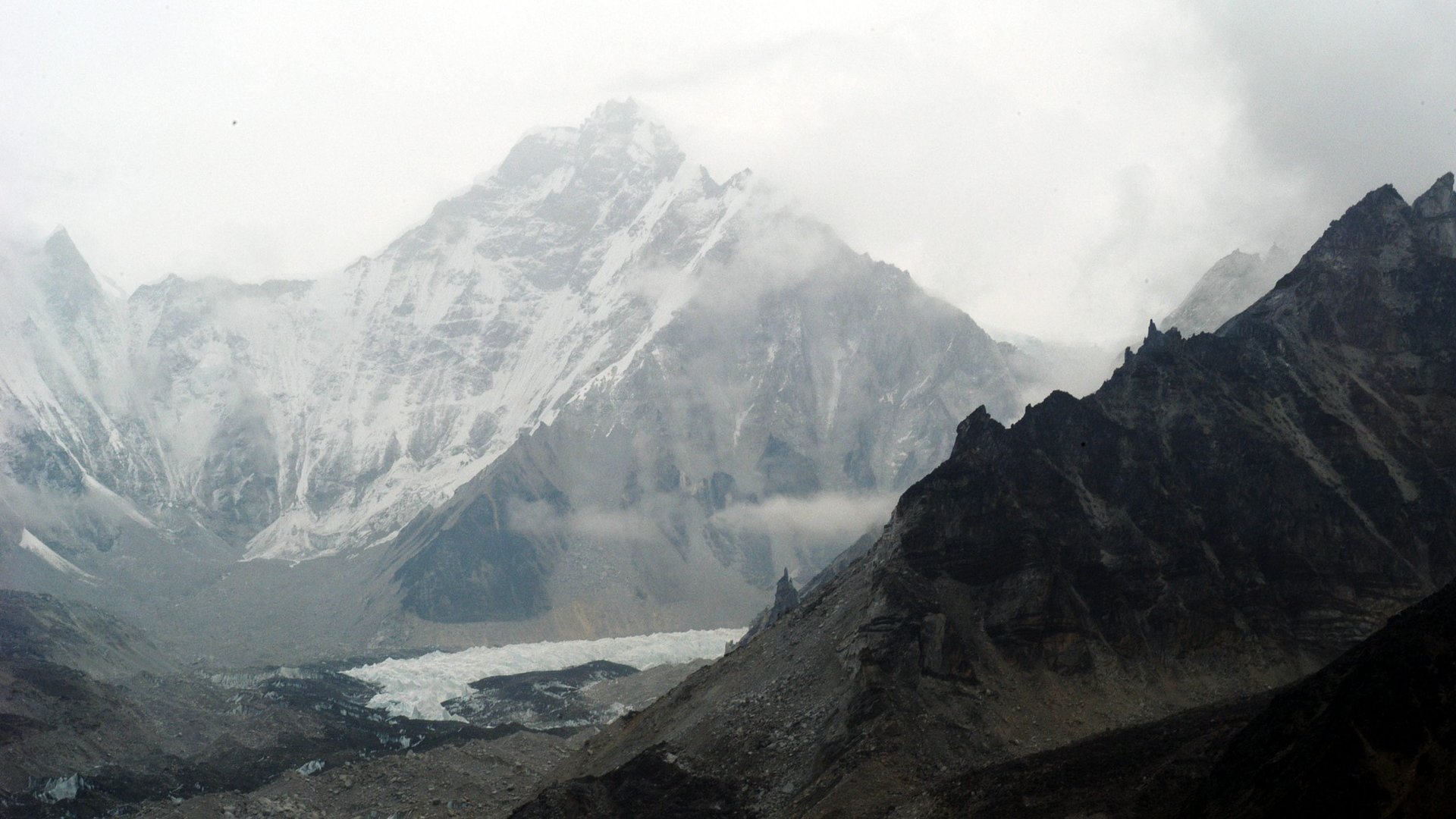What is glacial lake outburst flooding in the Himalayas?
The Himalayas are witnessing an increasing threat of glacial lake outburst flooding (GLOF). Over the years, several GLOFs hit the Himalayas, causing massive destruction to the infrastructure, while also claiming thousands of lives.


The Himalayas are witnessing an increasing threat of glacial lake outburst flooding (GLOF). Over the years, several GLOFs hit the Himalayas, causing massive destruction to the infrastructure, while also claiming thousands of lives.
What is a GLOF?
GLOF is the term scientists use to describe the incident when the water levels of glacial lakes breach their boundaries, causing large amounts of water to flow into nearby streams and rivers. These also create flash floods. Experts attribute GLOFs to climate change and the increase of anthropogenic footprints on glaciers.
Why are glaciers in the Himalayas shrinking?
There are 2,000 glacial lakes in the Himalayas of which over 200 are vulnerable to outbursts, according to Shakil Ahmad Romshoo, vice-chancellor of Islamic University of Science and Technology (IUST), Kashmir, who has done extensive research on glaciers in the Himalayas.
Romshoo states that there are varied reasons for the increase of GLOF threats in the Himalayas. “Glaciers in the Himalayas are shrinking very fast at the rate of 20 meter per year due to global warming. This increases the threat of a GLOF. Some glaciers may vanish in a few decades. In Jammu and Kashmir and Ladakh, most water requirements are met by glaciers. We need a proper strategy to preserve glaciers, so we don’t face water crises in the future,” explained Romshoo.
Irfan Rashid, who teaches at department of geo informatics University of Kashmir, elucidated that glaciers are retreating due to climate change and increase in the anthropogenic footprint in the glaciers.
How does a GLOF impact the surrounding areas?
“There are normal glaciers which are also called land terminating glaciers and they just release water, but do not pose any threat as a GLOF. But there are some glaciers which have a frontal region and also a bowl-shaped depression with accumulated water. When the volume of water in the lake increases; the confining moraine wall (accumulation of debris or material left by a moving glacier), is unable to contain the huge body of water and bursts, thus resulting in sudden release of water,” Rashid detailed.
Elaborating further, he said, when a lake is built up, a major earthquake could destabilize the moraine and cause an outburst. Similarly, he said if a snow avalanche or landslide finds its way into the lake, it could also lead to an outburst.
In June 2013, Uttarakhand had received an unusual amount of rainfall leading to the melting of the Chorabari glacier and the eruption of the Mandakini river. The floods affected large parts of Uttarakhand. Reportedly, the worst hit was the Kedarnath valley in Uttrakhand, as the flood left behind a death toll of more than 5,000.
Recalling the Kedarnath devastation of 2013, he said, “In Kedarnath (2013) when there was continuous precipitation for several days, it triggered landslides. In one of the spots, the debris fell into a lake and breached the moraine resulting in 5,000 people losing their lives.”
Rashid is also the co-author of a 2021 study titled Spatiotemporal dynamics and geodetic of glaciers with varying debris cover in the Pangong region of Trans-Himalayan Ladakh India between 1990 and 2019, which found that glaciers in the Pangong region of the Union Territory Ladakh, have receded 6.7% in the last three decades.
Why are some regions and people affected by GLOFs more than others?
GLOFs are not a recent phenomenon, but they remain a persistent threat to downstream communities and infrastructure besides flora and fauna.
“If a population lives downstream of less than 20 kilometers away from glacial lake, then the threat is bigger. These areas need proper monitoring and planning to avoid any casualties,” he said.
Rashid stated that although Western Himalayas had not been a hotspot for GLOFs historically, there have been many changes in the last 30 years, as many lakes have emerged and have the potential to have an outburst.
“In Jammu and Kashmir and Ladakh, there are 300 potential hotspots for GLOF,” he said while citing an example of the Gya glacial lake in Ladakh which had an outburst in 2014.
In August 2014, the Gya village of Ladakh witnessed a GLOF. The glacial stream of the village started to gush and the water destroyed the farmlands, crops, and a couple of houses.
According to a 2020 study titled Glacial Lake Outburst Flood (GLOF) Hazard, Downstream Impact, and Risk over the Indian Himalayas authored by Saket Dubey and Manish Kumar Goyal of Indian Institute of Technology-Indore, Indian Himalayas are home to numerous glacial lakes, which can pose serious threats to downstream communities and lead to catastrophic socioeconomic disasters in case of a GLOF.
Akhtar H. Malik, a field botanist at University of Kashmir, said that a GLOF causes habitat destruction to its surroundings for many kilometers. “When a glacier lake bursts, its water flows into downstream areas at extreme speeds. This causes massive damage to the infrastructure including flora and fauna and the area becomes non-habitable or witnesses habitat fragmentation,” concluded Malik, who has traveled extensively in Jammu and Kashmir and Ladakh for research.
This post first appeared on Mongabay. We welcome your comments at [email protected].